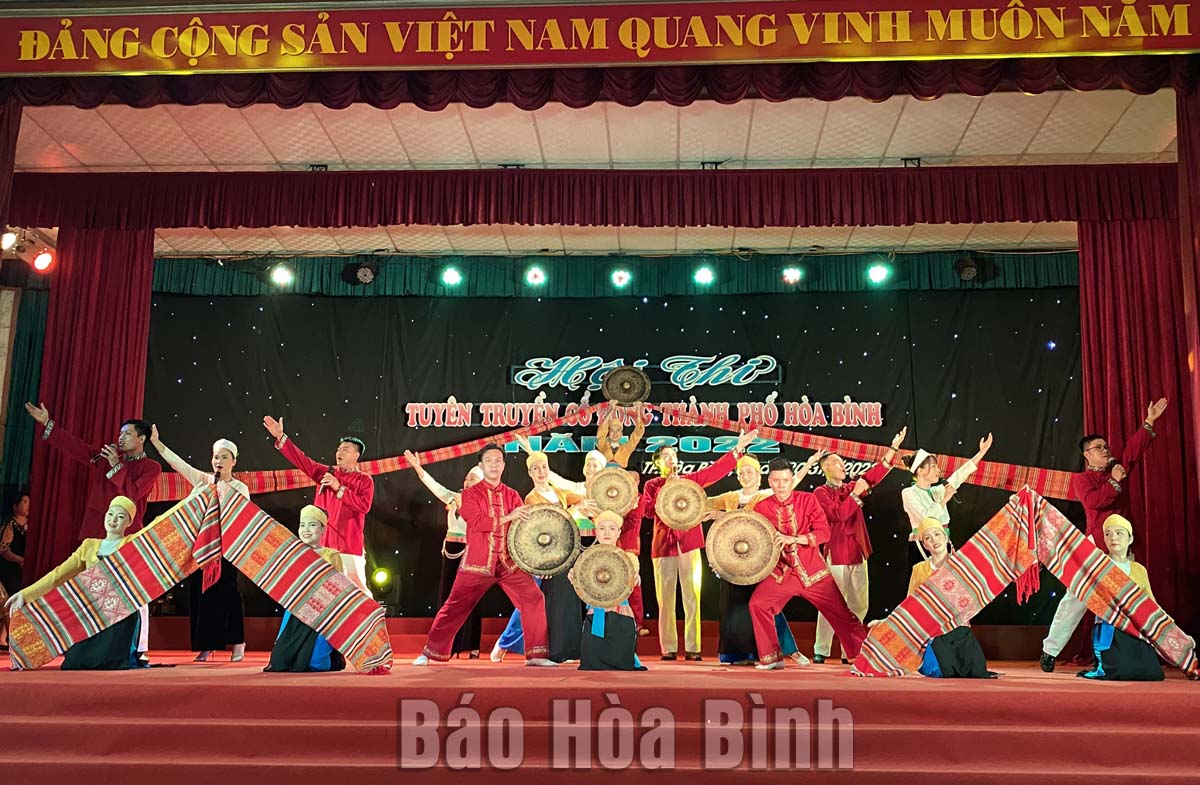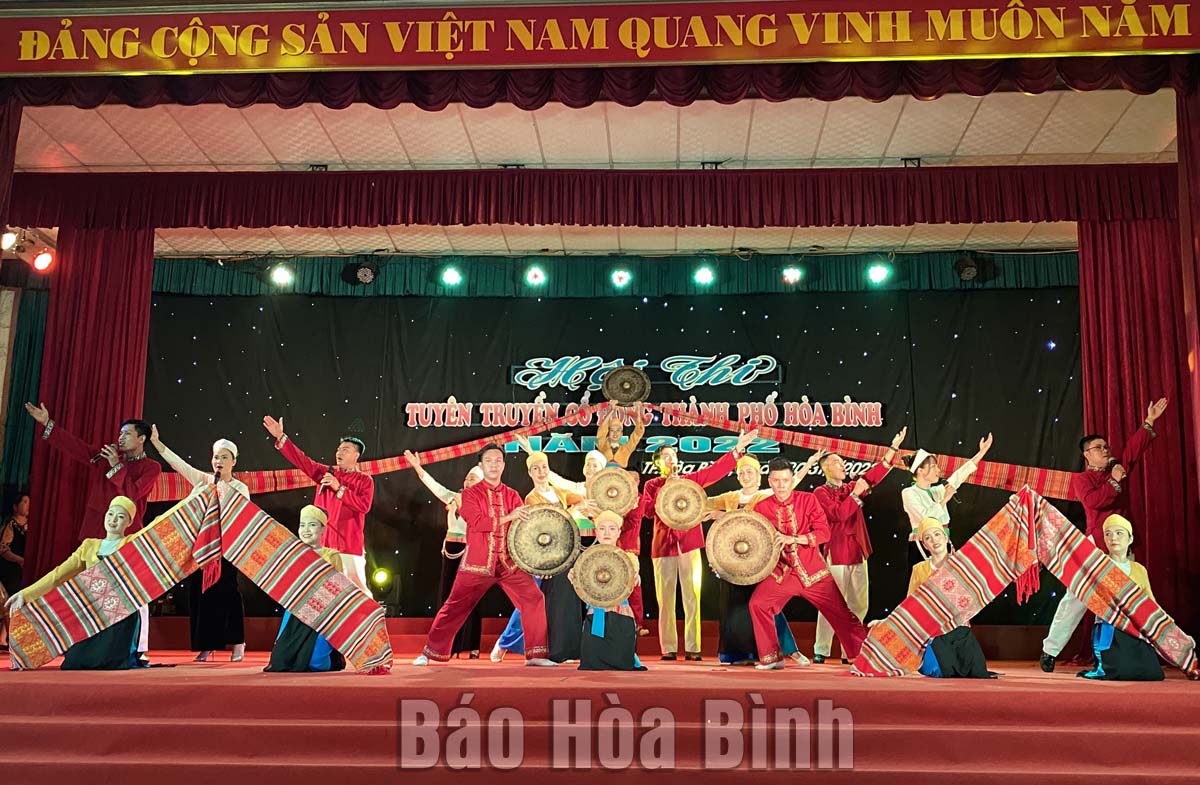
(HBO) – Hoa Binh City hosted a popularisation competition from July 30 – 31, bringing together nearly 500 performers and presenters from 19 commune- and ward-level teams.

A performance at the provincial popularisation competition.
Contestants competed in four categories,
including verbal popularisation, singing, dancing and theatrical acts.
Performances focused on praising the Communist Party of Vietnam and President
Ho Chi Minh; promoting new-style rural development; COVID-19 prevention and
control; and preserving the national cultural identity, etc. Each performance
lasted no longer than 30 minutes.
According to the Organising Committee, this year
all teams have prepared thoroughly in terms of content, setting, acting,
costumes and others. Their performances were consistent in the theme, lively,
easy to memorise and comprehensible, and reflected harmonious combination. The
most well-received included theatrical acts "Nguoi giu hon Muong” (Keeper of
Muong soul) of Tan Thinh ward, "Roong mo nhan nghia” of Yen Mong commune, and
"Bao ton va phat huy gia tri di san cac dan toc tinh Hoa Binh” (Preserving and
promoting heritages of Hoa Binh province’s ethnic minority groups).
After the two-day contest, 21 A, 29 B and 29 C
prizes were awarded to performances in all the four categories. Best performer
awards were given to those from the wards of Tan Hoa, Ky Son, and Tan Thinh.
First prizes for the best teams went to three
wards of Tan Thinh, Ky Son and Yen Mong. Five second and seven third prizes
were also presented./.
Hoa Binh province has carried out multiple programmes and initiatives to revive its cultural heritage which has gradually fallen into oblivion through the ebbs and flows of history.
The most prominent and defining feature in the prehistoric era of Hoa Binh is the Hoa Binh Culture. The Culture was first discovered in Hoa Binh. The significant prehistoric culture represents not only Vietnam but also Southeast Asia and southern China. Through excavations of cave sites in the limestone regions of Hoa Binh, French archaeologist M. Colani introduced the world to a "Stone Age in Hoa Binh province – Northern Vietnam" in 1927. On January 30, 1932, the First Congress of Far Eastern Prehistorians, held in Hanoi, officially recognised the Hoa Binh Culture.
Known as the "Land of Epic History”, Hoa Binh province, the gateway to Vietnam’s northwest, boasts a strategic location and a unique cultural tapestry woven by its ethnic minority communities.
The People's Committee of Luong Son District recently held a ceremony to receive the certificate recognizing Sau Communal House in Thanh Cao Commune as a provincial-level historical and cultural site.
Recognising the importance of cultural heritage preservation in protecting and promoting the value system of Vietnamese culture, and serving socio-economic development in the new period, Party committees and local administrations in Hoa Binh province have identified it as a key task in the cultural development strategy. The province has been making efforts in mobilising resources, creating consensus among people and engaging ethnic communities in preserving and promoting cultural identity.
Hoa Binh province has captured growing attention both domestically and internationally for its distinctive cultural heritage and rich history. Most notably, it has been renowned for its famous Hoa Binh culture, considered the cradle of ancient Vietnamese civilisation. Looking ahead to significant milestones in 2025 and the 140th anniversary of province establishment in 2026, Hoa Binh Newspaper presents a comprehensive overview of the province's development across economic, social, cultural, tourism, and security domains.



